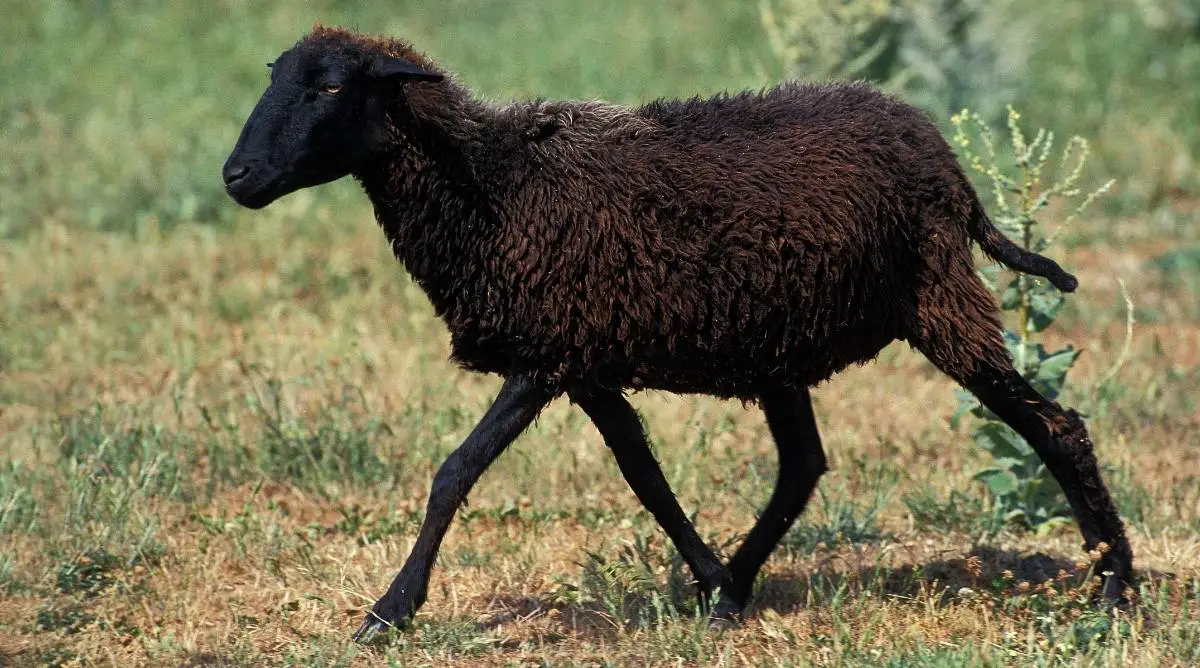Karakul sheep is possibly the oldest breed of domestic sheep, dating back to 1400 BCE. The breed has adapted to high-altitude regions of Central Asia with poor vegetation and low water supply. Karakul sheep are primarily wool sheep, prized in the fur industry for their lustrous black fleece.
Table of Contents
Karakul Sheep Breed Origin
Karakul sheep may be the oldest breed of domesticated sheep, with carvings on ancient Babylonian temples indicating it may date back to 1400 BCE.
Karakuls are raised primarily for their young lambs’ skins or pelts, called Persian lambskins. Their lustrous, tightly curled black coats are in high demand in the fur industry.
Karakul sheep are named after Qorako’l, the city in Uzbekistan where they originated. This region is still a major producer of Karakul fur, producing around 25% of the estimated 4-5 million pelts worldwide.
The breed is also raised in large numbers in Namibia due to its introduction by German colonists in the early 1900s.
Karakul sheep are currently classified as a threatened species by the Livestock Conservancy.
Karakul Sheep Breed Characteristics
| Characteristics | Description |
| Origin | Uzbekistan |
| Appearance | Medium-sized sheep. Typically black. Fat-tailed sheep. Rams can be polled or horned. |
| Wool | Prized for its lustrous, crimp-free fleece. Staple length is 6-12 inches. Wool has a low grease content. |
| Weight | 175-225 pounds (Rams), 100-150 pounds (Ewes) |
| Meat | Karakul tail fat can be used to add taste and juiciness to grilled meat, to oil cookware, or to provide a mild flavor to a dish. |
| Environment | Karakul sheep adapted to the highlands of Central Asia, a high-altitude area with poor desert vegetation and low water supply. |
| Common uses | Wool production. |
| Fertility | Out of season breeding. Ewes can produce three Karakul lambs in two years. |
The Karakul sheep is a medium-sized, broadtail sheep that has thrived for centuries in the harsh climates of Central Asia. Its large tail is used to store fat.
Karakul rams weigh 175-225 pounds, while ewes weigh 100-150 pounds.
The breed’s heads are long and narrow, with a depression between the eyes. Rams can be polled or horned. The horns can range in size from short to long, and may spiral outward.
Because Karakul sheep can breed out of season, they can produce three Karakul lambs in two years. Most are born as single lambs but twins do appear sometimes.
They are vigorous grazers and feeders that are helpful in areas where pastures need to be improved. Because they have a strong instinct to flock, they can be kept in fenced pastures or on the open range.
Best Environments for Karakul Sheep
Karakul sheep are hardy and have adapted over centuries to some of the harshest regions in the world. Karakul sheep originated in the highlands of Central Asia, a high-altitude area with poor desert vegetation and low water supply.
Karakul sheep can store fat in their tails, which helps them survive during times of drought. Although they can withstand extreme temperatures, it is essential to keep them away from muddy pastures and allow them access to dry shelter.
Karakul Sheep Wool
The colorful fleece that makes the Karakul unique is caused by a dominant black gene. Karakul sheep can also be white, blue, tan, silver, gray, or reddish-brown.
At birth, the Karakul lambs have a thick fleece coat that is known as “Persian Lamb Fur.” The majority of lambs are born with smooth, sleek hair on their face, ears, and legs. They are born coal-black with beautiful wavy curls.
The Karakul breed produces a strong fiber, lightweight, high-volume fleece that, at its finest, is long, lustrous and typically crimp-free. The fleece is long-stapled (6-12 inches) and has a low grease content.
Why Raise Karakul Sheep?
Wool
- The fleece of Karakul Sheep is shiny, silky, and double-coated.
- They are sought after by hand spinners all over the world because they spin rapidly, easily, and with minimal effort.
- Karakul wool is widely used to create rugs, saddle blankets, outerwear, and other wool products. It also produces excellent carpet material.
Milk
- Karakul milk is naturally sweet and heavy in fat and dissolved solids. It produces excellent, high-yielding cheese. It is also produces silky, creamy butter and yogurt.
Meat
- Karakul sheep are a pure fat-tailed breed.
- Their fat can be used to add taste and juiciness to grilled meat, to oil cookware, or to provide a mild flavor to a dish.
- Karakul fat can also reduced into tallow.

